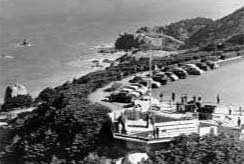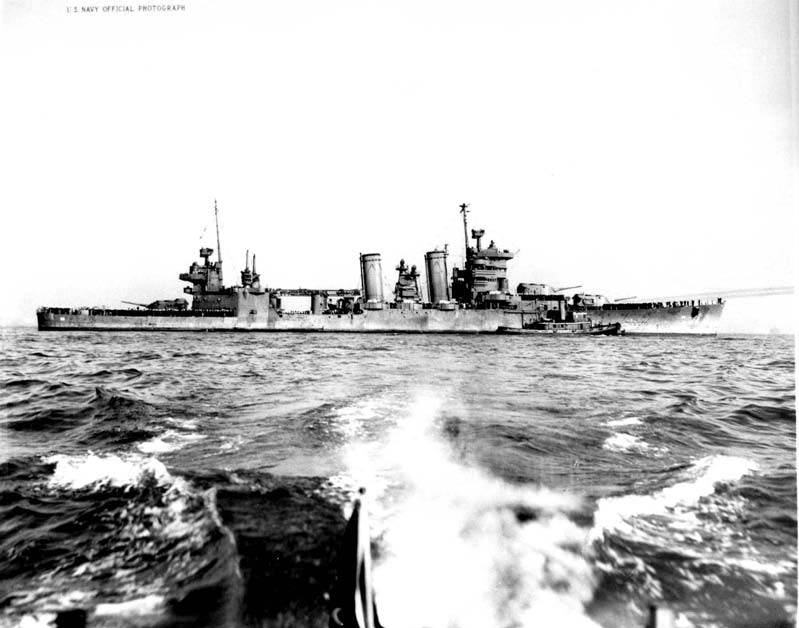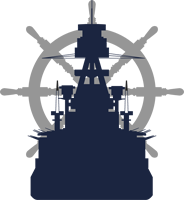The CA-38 at the Golden Gate: Battles and Campaigns
Heber A. Holbrook

After the Night Naval Battle at Guadalcanal on 12-13 November 1942, the battered cruiser U.S.S. San Francisco (CA-38), came home to Mare Island for extensive repairs of her battle damage.
The ship had taken a pounding in which 107 men aboard the CA-38 were killed, including Rear Admiral Daniel J. Callaghan; and scores of others were wounded. Admiral Callaghan, the taskforce commander of 5 cruisers and 8 destroyers, had clashed with 2 Japanese battleships, a cruiser, and 11 destroyers, in .one of the most furious sea battles ever fought.. [See Fleet Admiral Ernest J. King, U.S. Navy at War. Navy Department. GPO, 1946, p. 60.]
On December 4, 1942, she came home to a hero's welcome. She was the namesake of the city of San Francisco and had been built by the citizens of Vallejo, as one of the only three heavy naval warships ever built on the West Coast (the other two being the battleship California and the cruiser Chicago) .
In the Mare Island Naval Shipyard in 1943 the shell-holed bridge of the San Francisco had to be completely replaced. The bridge wings were put aside, and in 1950 the City of San Francisco and the U.S. Navy used them as the center piece for the USS SAN FRANCISCO MONUMENT overlooking the Pacific Ocean at Land's End, up on the cliffs where extended Geary Street meets the water.
They are there today, an irreplaceable artifact, a relic of a bygone war for America's survival. The shell-holed bridge wings of the USS San Francisco may well be the sole remaining physical evidence of one of history's most violent sea battles.

USS CA-38 Monumented at Lands End
In World War II the USS SAN FRANCISCO fought in 17 battles and campaigns in the Pacific Ocean area from 1941 to 1945 against the Imperial Armed Forces of Japan. A Japanese torpedo bomber crashed into her in the afternoon of Nov. 12, 1942 and 51 officers and men were killed or wounded.
Then that night during the Night Naval Battle of Guadalcanal, Nov. 12-13, 1942, against a Japanese Striking Force containing two battleships, she suffered severe damage when struck by 45 major caliber projectiles, and an additional 192 officers and men were killed or wounded.
Rear Admiral Daniel J. Callaghan, the Task Force Commander, and ships Captain Cassin C. Young were killed on the ship's bridge.
The USS SAN FRANCISCO was awarded the first Presidential Unit Citation, by President Franklin D. Roosevelt, for her gallant action.
After the Night Naval Battle of Guadalcanal the ship returned to the United States for repairs in the Naval Shipyard, Vallejo, California. The battered bridge wings were removed, and in 1950 they were used to construct a memorial to Rear Admiral Callaghan and the officers and men who died with him aboard the CA-38 at Guadalcanal. The CA-38 Monument is located at Land's End, California, overlooking the Pacific Ocean at the entrance to San Francisco Bay.
As a measure of the furiousness of the battle, four sailors aboard the U.S.S. San Francisco (CA-38) were awarded the Medal of Honor. They were:
Rear Admiral Daniel J. Callaghan and Boatswain's Mate Reinhardt John Keppler, both posthumously; and Lieutenant Commanders Bruce McCandless and Herbert Schonland, the senior survivors who in mid-battle then captained the ship.
Another 32 crewmen were awarded the Navy Cross; and 21 crewmen were awarded the Silver Star, most all of them posthumously.
The World War II Chief of Naval Operations characterized the November 12-13, 1942 Night Naval Battle of Guadalcanal as "One of the most furious sea battles ever fought"

USS San Francisco |
|
| Displacement: | 9 950 Tons |
| Class: | Heavy Cruiser of the New Orleans Class |
| Laid Down: | September 9, 1931 |
| Launched | March 9, 1933 |
| Commissioned: | March 10, 1934 |
| decommissioned: | March 10, 1947 |
| Image Source: | NavSource.org |
